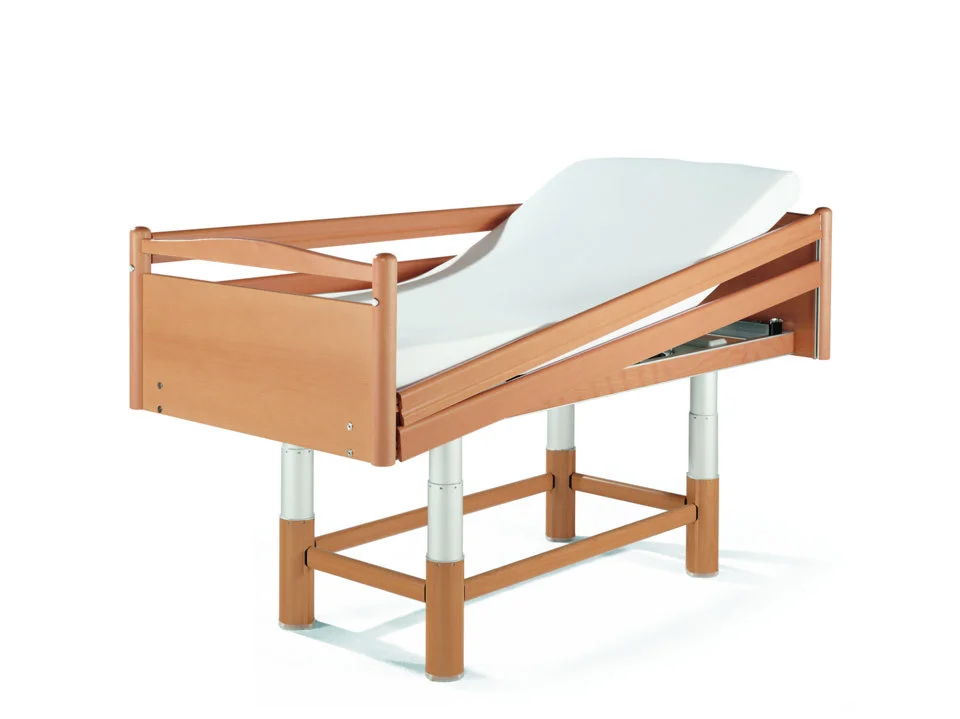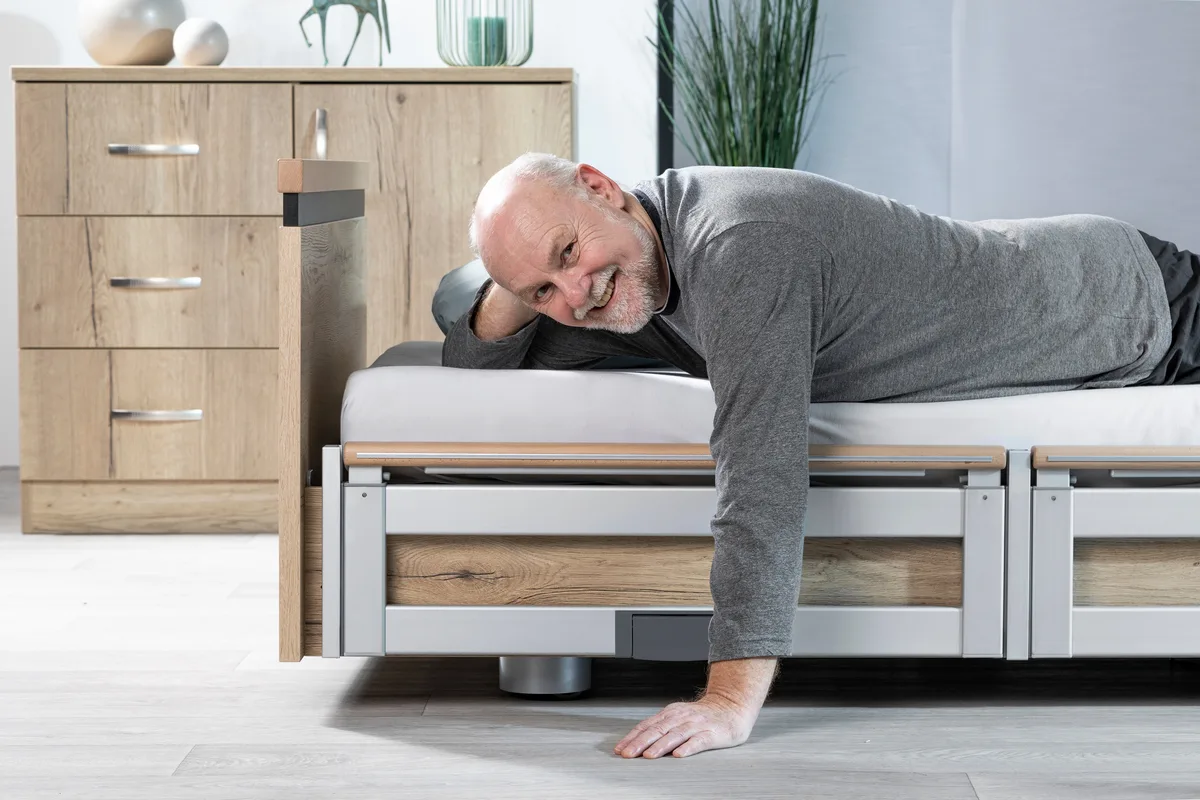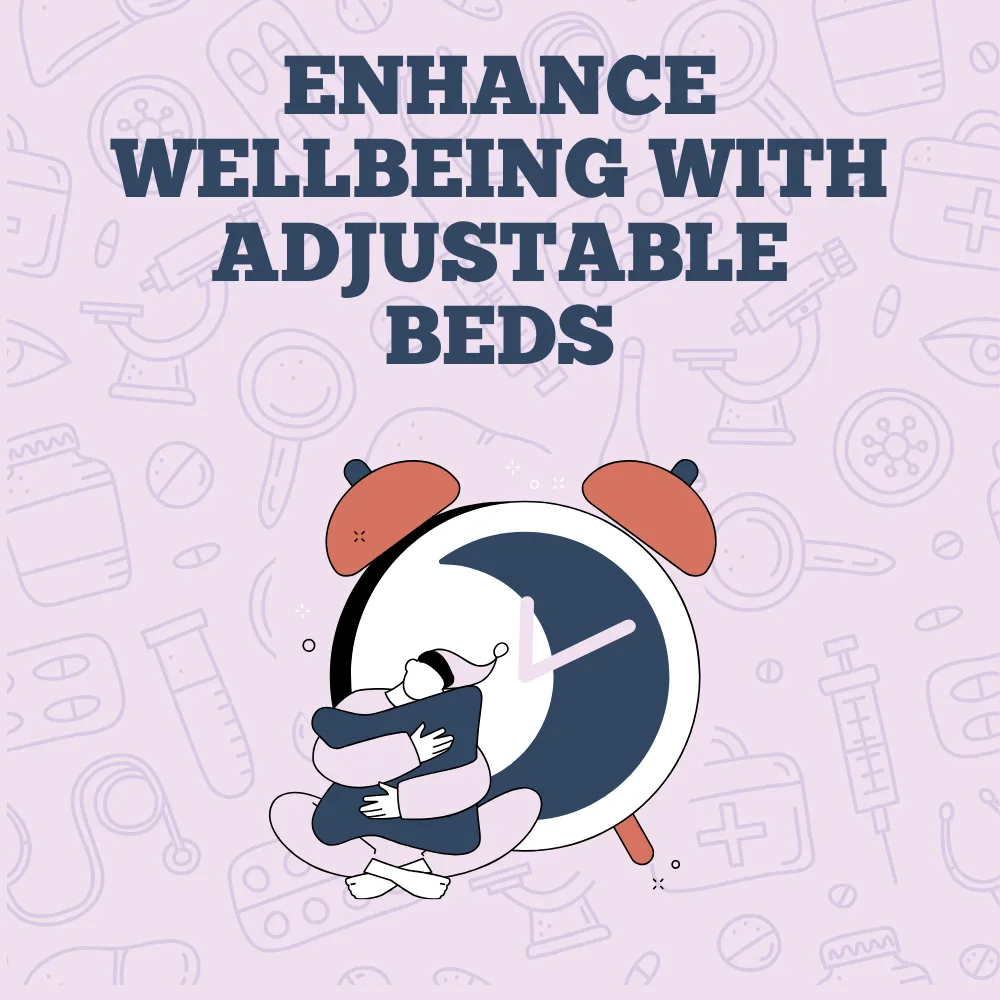Introduction
Bed side rails, also referred to as bed, levers, cot-sides, safety sides, and bed guards, are used extensively in the health and social care sectors to protect vulnerable people from falling out of bed and injuring themselves. They usually achieve this very successfully. However, there continues to be reports of entrapment of bed occupants, which have included fatalities of children and adults.
Main contents
- Why Use Bed Side Rails?
- Who is affected?
- Statistics
- Common Risks / Causes of Injuries from using Bed Side Rails
- Legal Considerations
- Mattress Overlays / Air Mattresses – Considerations
- Maintenance
- Assessments
- Selecting a Safe Bed Side Rail
- Side Rails supplied with BaKare’s Beds
- How We Can Help
- Further Information
Why Use Bed Side Rails?
Bed side rails are used in hospitals, nursing homes, residential homes, hospices and in the community to reduce the risk of falls from the bed. They are not intended to limit the freedom of movement or to be used to restrain patients in bed. Bed side rails should not be used as a maintenance form of managing residents.
Who is Affected?
Legally, the health and safety of people who use care services is covered. “People who use care services” is a term used by the HSE to describe patients, residents and any others in health and social care premises.
Users who use bed side rails but not in health or social care premises such as in their own homes and not receiving professional care, are not covered by this legislation, however following the guidelines and advice given (where relevant) allow for practical safety considerations to be adhered to. Occasionally, some people choose to use their own bed when receiving care, which will require their equipment to meet relevant guidelines for safe use.
Statistics
Between April 2001 & March 2005 HSE statistics identified at least 10 fatal accidents and a number of major injury incidents in which the use of bed rails was implicated.
Common Risks / Causes of Injuries from using Bed Side Rails
There are a number of failings associated with bed rail use that may result in an accident, with the most common type of incident reported involving care home residents becoming entrapped in divan type bed rails or when using a metal framed bed fitted with bed rails from a third party supplier. Common causes of accidents involving bed rails are:
- Poorly fitting bed rails that may result in parts of the body becoming trapped, e.g. between the mattress and the bedrail. This could arise from using a third party bed rail that is not designed for use with a particular bed type.
- Poor bed rail design, for example very large spacing between the rails that may result in parts of the body becoming trapped
- Movement of the bed lever away from the side of a divan mattress
- Use of mattress overlay which reduces the effective height of the bed rail that may result in the person falling over the top of the bed rail and out of bed.
- Use of an air mattress which is too light to keep the bed rail assembly in position on a divan bed
- Bed rails in poor condition due to a lack of maintenance
- User unlatching or violently shaking and dislodging bed side rails
Legal Considerations
A company responsible for running a large number of nursing homes was fined £175,000 following a fatality involving bed rails. HSE recommend that “Strong enforcement action should be considered where failings of risk management give rise to significant risk to vulnerable people.”
Mattress Overlays / Air Mattresses – Considerations
- A pressure sore overlay system is used on a bed which had a bed side rail fitted. The extra combined height of the mattress would make the bed side rail less effective as it is easier for the occupant to fall from the bed over the bedside rail. A higher rail or side rail extensions would need to be considered in combination with a lower profile air mattress.
- A newer, thinner replacement mattress is used (sometimes as a replacement for mattress overlay and air mattress), this could be too low, creating increased gaps between the top of the mattress and bed side rails, meaning increased chance of entrapment.
- If the standard mattress is replaced with a lightweight foam mattress, the whole bedside rail assembly, including the mattress and occupant can tip off the bed when the occupant rolls against the bedside rail. This is because many divan bed side rails rely on the weight of a standard traditional divan mattress to hold the assembly securely in place.
- The hazard of entrapment between the side face of the mattress and the bed side rail may be exacerbated due to the soft, easily compressible nature of the mattress edge. If an air mattress is intended to be used with a bed rail then the mattress supplier should be contacted for advice.
Maintenance
Many incidents are caused by a lack of maintenance. Bed side rail assemblies should be included on a planned preventative maintenance schedule and records should be kept of inspections and maintenance.
Assessments
Bed side rails should not be used before a risk assessment is carried out and recorded in the patient’s records. Risk assessment includes the combination of the occupant, proposed bed rail, the bed and the mattress (or mattresses where overlays are used). Existing combinations should also be reviewed to ensure that they are compatible with the user and the bed.
The risk assessment is to be repeated if the bed, mattress, bed rail or condition of the occupant changes. Purchasing procedures should ensure that only appropriate equipment is obtained. These procedures should include experience and knowledge gained from previous risk assessments and use.
Selecting a Safe Bed Side Rail
Before selecting a bed side rail you should ask if the relevant standards and guidance (including the BS EN) available. Do the manufacturers provide guidance about when the use of bedside rails may be inappropriate? Is it to be used with a small person or does the person have an abnormally large or small head?
Side Rails supplied with BaKare’s Beds
Beds supplied by BaKare have side-rails integrated into the bed and address these issues in a number of different ways:
- All BaKare & Malsch beds’ side rails are designed to conform to the standard BS EN 60601-2-52:2010 Standard for Beds for Medical Use (when used appropriately) which specifies requirements and dimensions for bed rails intended for use by people over 12 years old.
- Malsch beds’ side rails are integrated into the bed and have a load bearing capacity of 80kg (176lbs).
- Split, 2-part side-rails, as used on Volker 3080, Kepler & S380 adjustable beds may be ordered with extra maximum height (40cm above lying surface) which would effectively allow a combined mattress height of nearly 7″, allowing mattress overlays or air mattresses below this height to be used safely
How We Can Help
Due to our close contacts within MHRA and HSE, Bakare Beds are well placed to provide advice on constraints and regulations that care providers must operate within. Our trained staff can conduct an audit of your premises and provide a report outlining recommendations with regards to safe use of side rails – in many instances we have actually saved the care homes money! BaKare operate with discretion and are happy to comply with NDA’s (Non-Disclosure Agreements) when auditing. Please contact us if you would like to speak to an expert who will be able to advise or arrange an audit.
Bakare Beds have a nationwide service team providing audit, training, service, maintenance and inspection services to many care homes and hospices across the UK. If you would like to arrange for our staff to provide an audit on your equipment and provide recommendations please contact us.





